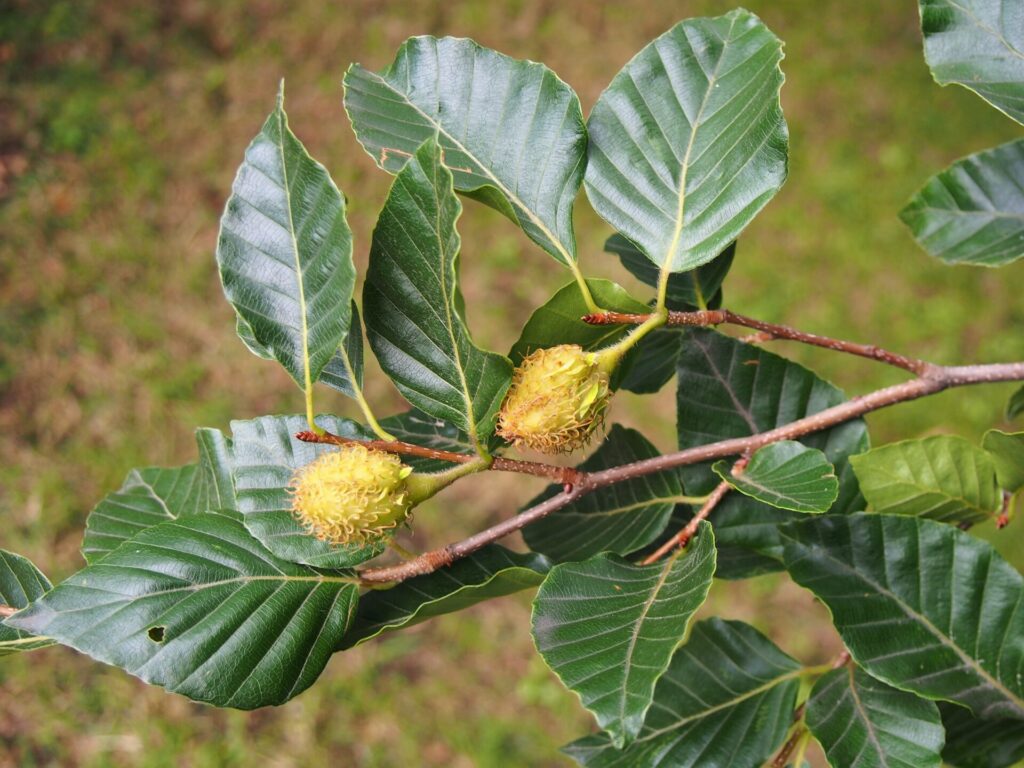A common deciduous tree in forests, the beech tree has a trunk with smooth gray bark,
2- to 3-feet in diameter. The leaves are up to 5 inches across, oval or elliptical in shape, dark green
in color with prominent veins that end in toothy edges. Yellowish green flowers appear in April to
May, and the female flowers give way to triangular- shaped beechnuts. The foliage turns golden
bronze in fall. This is a large tree, often growing to 80 feet or even more.
Although sometimes used as a landscape tree, the American beech is not well suited to urban
conditions; it does not like even low pollution levels. Left unattended, the shallow roots will readily
sucker, gradually forming a thicket of trees. This is quite a slow-growing tree, generally adding no
more than 6 to 9 inches per year, very gradually achieving a mature height.






